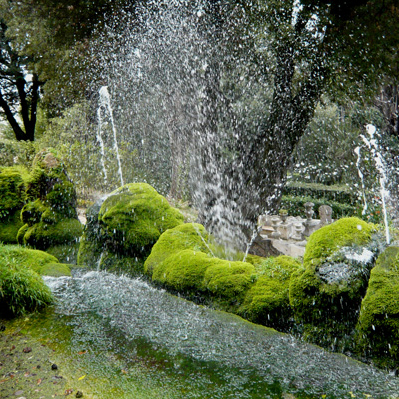
DOCTORAL STUDENT
Nadine Schütz
ADVISOR
Professor Christophe Girot
CO-ADVISORS
Prof. Kiyoshi Sey Takeyama, Architect, Kyoto University Design School
Prof. Germán Toro-Pérez, Composer, Institute for Computer Music and Sound Technology, ZHdK
PROJECT TIMEFRAME
Completion: 2017
PROJECT FUNDING
Swiss National Science Foundation, SNF
Studies on the Perception and Implementation of Landscape Acoustics
Landscape is a multimodal spatial experience that could more generally be defined as a meaningful and dynamic sensory relationship between humans and their environment. Sounds are an intrinsic dimension of this relationship – roots of which reach far beyond theoretical discourses that ascribe the birth of landscape to the detached visual aesthetics of modern Western cultures. While the sensory landscape ideal of this aesthetic consists of looking at or over a framed portion of the environment, listening happens within an environment, a space that surrounds us, to which we physically belong and with which we interact. While our personal experiences tell us that vision and hearing are complementary, typically inseparable parts of landscape experience and spatiality (and for that matter other senses), professional practice does not reflect this unity, or, at best, frames sound as a pollutant. Cultivating Sound accordingly proposes a holistic approach to landscape to overcome the conceptual separation between visual and auditory ‘scapes,’ as suggested by the notion of soundscape since its emergence in the 1960s. Instead of focusing on the deficiency in auditory landscape intelligence, this research project envisions an empirical and specific design approach to sonic landscape qualities, particularly for public space. Through fieldwork-based study, culminating in experimental landscape miking and mixing methods that enable sensory experience and design experimentation, I aim to reveal and make tangible the shared nature through which sound and landscape are intimately related.
This research dismantles and redefines prevalent paradigms by elucidating immanent landscape values and desires that are profoundly linked to sonic impressions, but concealed behind the abstract formulations of ‘noise’ and ‘silence’ prevailing in today’s planning practice. It proposes elements for an integrative sonic landscape vocabulary, based on analysis of historical sites of different cultural origin as contemporary places in their own right, as well as sensory reconstitution of these sites in a customized lab for trialing of design interventions. Shisen-do (Kyoto, Japan), the Villa d’Este (Tivoli, Italy), and the Parc des Buttes-Chaumont (Paris, France) are particularly evaluated. I also incorporate analysis and references from actual, contemporary urban planning design proposals and projects. Acknowledging the human need for ambient sound, cumulatively this project invites us to inverse the question directed at sound in landscape design, from mitigation and rejection to, What sounds do we want? and What auditory qualities do we want? Sound opens up novel dimensions of landscape figuration, allowing a reinvention of ‘natural aesthetics,’ the vital link between people and their physical environment. (Well-designed) sound should be heard.

